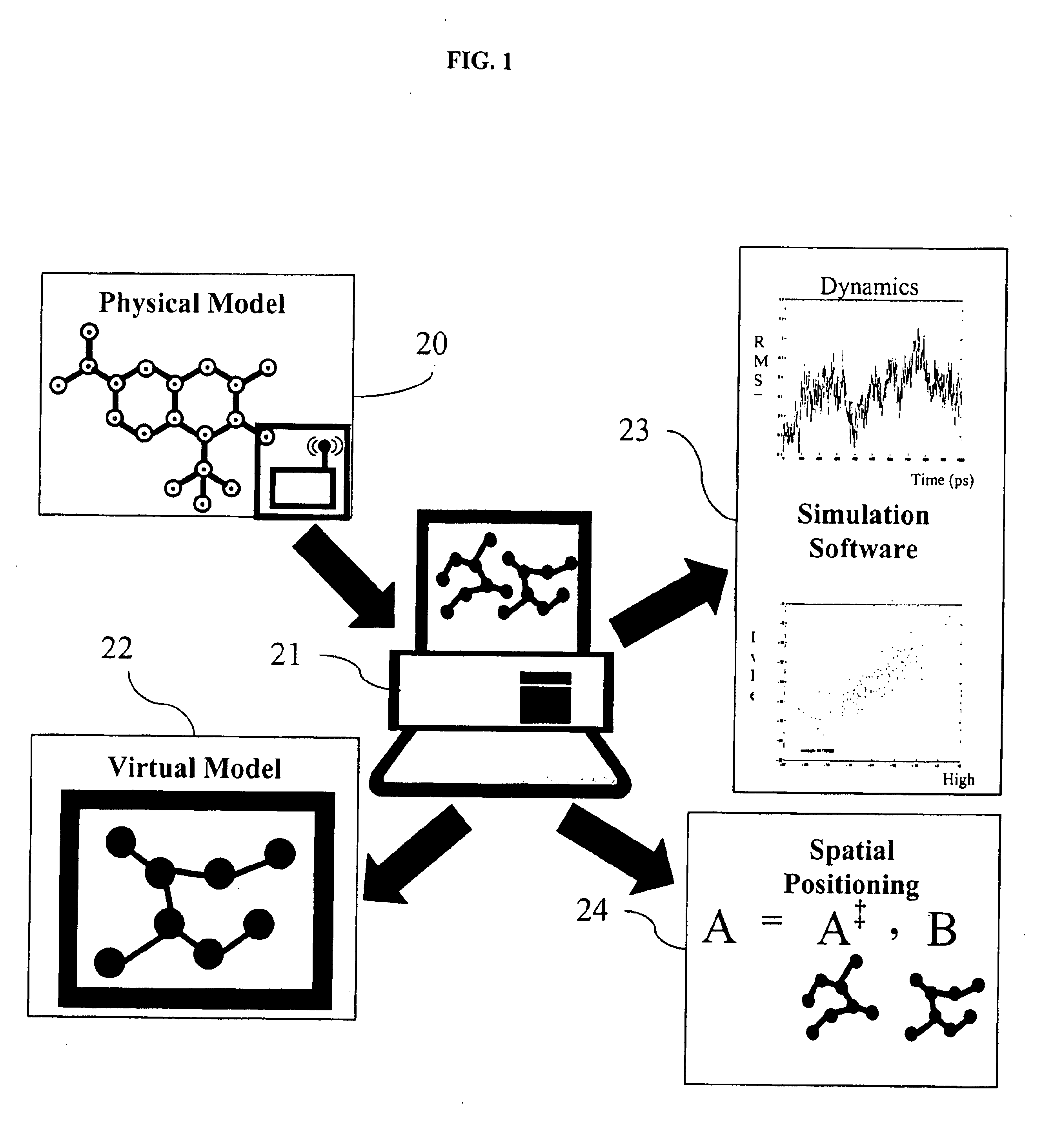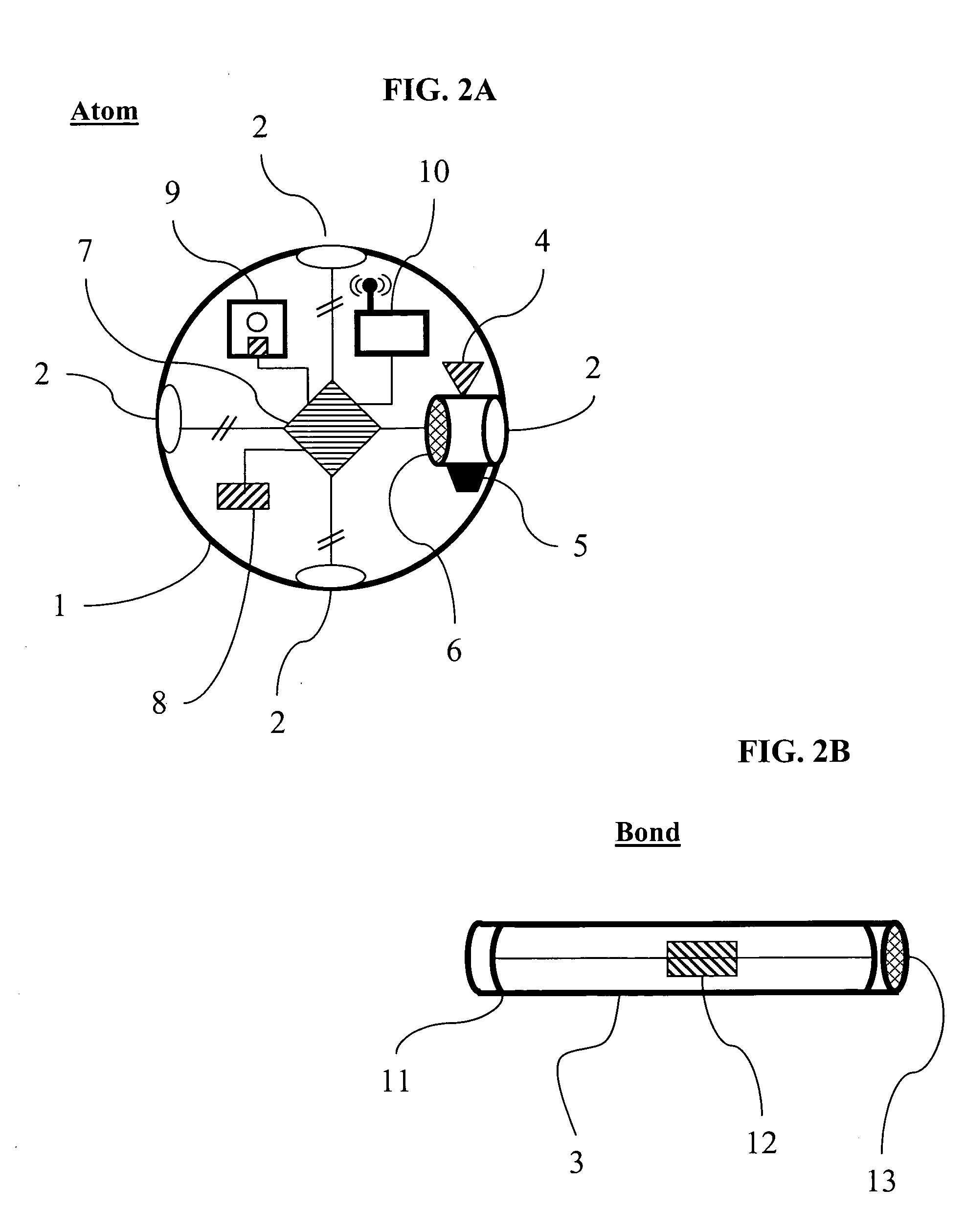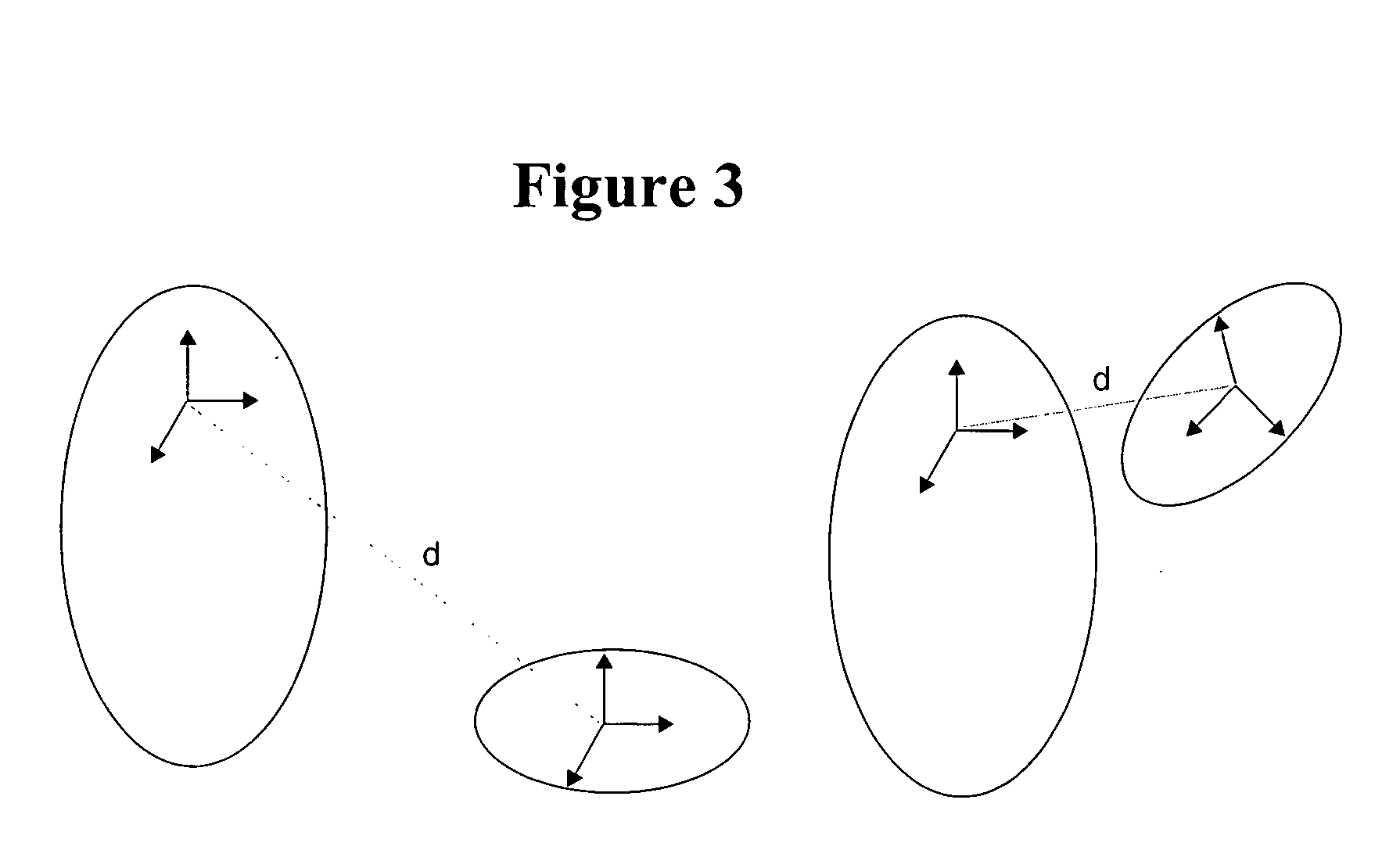Method and system for interactive molecular docking and feedback
a molecular docking and feedback technology, applied in the field of molecular modeling, simulation and docking, can solve the problems of static system, non-interactive with other physical or virtual molecular models, cumbersome interface for using such software systems,
- Summary
- Abstract
- Description
- Claims
- Application Information
AI Technical Summary
Benefits of technology
Problems solved by technology
Method used
Image
Examples
Embodiment Construction
[0040] Modeling systems are used to represent, simulate, and predict the reaction of various structures within and between themselves, and generally include the coupling together of a plurality of structural elements. Such structural elements can include nodes and bonds. Bonds are commonly used to couple nodes together, and these can be used to represent, for example, molecular and atomic particles and interactions. However, similar structural modeling elements are used in many technological fields, including buildings, bridges, trusses, foundations, and many other civil structures. The invention is useful in these fields, as well as in the field of atomic and molecular modeling, and others. The invention encompasses both physical and computer-based (virtual) modeling systems. For clarity and ease of description, the following discussion and explanations focus primarily on molecular modeling technology. However, the invention has application to many other, additional, fields of ende...
PUM
 Login to View More
Login to View More Abstract
Description
Claims
Application Information
 Login to View More
Login to View More - R&D
- Intellectual Property
- Life Sciences
- Materials
- Tech Scout
- Unparalleled Data Quality
- Higher Quality Content
- 60% Fewer Hallucinations
Browse by: Latest US Patents, China's latest patents, Technical Efficacy Thesaurus, Application Domain, Technology Topic, Popular Technical Reports.
© 2025 PatSnap. All rights reserved.Legal|Privacy policy|Modern Slavery Act Transparency Statement|Sitemap|About US| Contact US: help@patsnap.com



